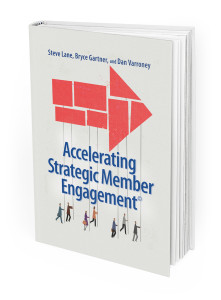![]() Is Your Association a Market Leader? Legendary business leader and former GE Chairman and CEO Jack Welch said ” if you don’t have a competitive advantage, don’t compete.” Rightly so, Market Leaders consistently leverage their marketing prowess to dominate the sectors in which they serve. Failure to lead and compete effectively will result in a market share loss for Associations.
Is Your Association a Market Leader? Legendary business leader and former GE Chairman and CEO Jack Welch said ” if you don’t have a competitive advantage, don’t compete.” Rightly so, Market Leaders consistently leverage their marketing prowess to dominate the sectors in which they serve. Failure to lead and compete effectively will result in a market share loss for Associations.
Market Leader Versus Market Participant
It’s risky for any Association to stay back with the pack. New coalitions, Association’s and Law Firms actively seek corporate funding tailored to meet short and long term policy or regulatory objectives. Competitive pressure builds constantly, Associations can ill afford to be passive.
Market Leaders that are astute: measure their impact in real time, execute multi channel marketing and communications strategies and continuously engage stakeholders and elected officials. They also build upon market strength, maintain their uniqueness, drive powerful value propositions while they meet and exceed their revenue objectives.
3 Strategies To Become a Market Leader
1. Build A Brand Fortress. Create and execute an ongoing marketing and communications program that emphasizes Association’s value proposition: providing insights, connections and advocacy for the industry. Be viewed as the premier Association leader in a sector. Issue experts visible in: social and traditional media, among elected officials and regulators.
2. Help Member’s Overcome Obstacles. The Association’s policy and regulatory agenda, grass roots programs, are harmonized to help members overcome legislative and regulatory hurdles.
3. Engage Members. Members view the Association as their strategic ally and their dues payments are perceived as an investment instead of an expense. The culture is seen as a community, members are invited to participate and share their perspectives. Staff, Members and Board Members see their roles as interconnected, everyone is working to achieve the same outcomes.
Market Leaders Consistently Execute and Deliver
Since they have a strong foundation, the Market Leader has clear cut objectives: Achieve policy and regulatory objectives, drive new membership growth, sponsor renewal and growth, sponsor sales, conference attendance growth.
Execution is a key aspect of a Market Leading Association, so much so that “getting it done” is ingrained in their DNA. Firing on all cylinders, they have regular team meetings to celebrate success and/or determine corrective steps to stay on target, performance rewards successful member engagement, advocacy and revenue growth throughout the year.
Is Your Association a Market Leader?
For several Associations, success and excellent performance are deliberate. These groups successfully transitioned from Market Participant to Market Leader. One Association became a market leader, built a brand fortress connected to member objectives and engaging members. By doing so they almost tripled revenues in just over two years. Another Association restructured an underperforming Division and achieved their first net gain performance in five years.
According to a recent Survey by the Business Roundtable, the “uncertain political environment” and unresolved U.S. Debt Crisis were identified as reasons for the economy showing only slight improvement. Achieving Market Leader status is as necessary as it is essential for Associations. As Companies evaluate their Associations, you can bet the Market Leaders will appear on the list of memberships to renew. (http://bit.ly/1PACOCc)
For a free copy of the “Accelerating Strategic Member Engagement” eBook, request your copy at www.potomaccore.com.




